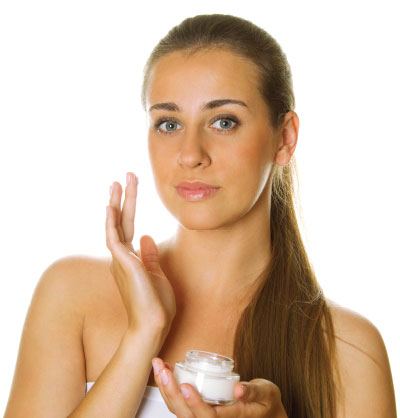A fundamental understanding of acne itself is necessary, before any kind of treatment can be considered. And a drug-free regimen with proper treatment can control nearly any acne condition, if approached both topically and psychologically. Simply because all acne is hormonally-induced – and once it takes place in a young person’s skin, stress factors create more pressure on the hormonal cascade fluxes. And this is where psychology is important to a successful cure or controlled remission.
The word acne comes from the Greek word akne, meaning “point.” It is a chronic inflammatory disorder of the pilosebaceous gland and is characterized by the comedo (primary lesion) macules. There are papules, pustules, and cystic scars and/or cuneiform scars (ice pick). Physiology studies show that starting somewhere before adolescence, perhaps ages nine or 10, the adrenal glands produce dihyroepiandrosterone sulfate (DHEAS). At actual puberty, other androgens, such as testosterone and hehydrotestosterine (DHT), are produced. All these androgens suddenly stimulate the sebaceous gland to secrete more and more sebum. Attempting to dry this excess sebum out, whether by topical treatments or drugs, only exacerbate the glands to pump more sebum, in addition to other contraindications.
The corneum has a very fast renewal system at this age – new cells piling up on the surface of the epidermis faster than old cells are naturally exfoliated. This creates a “dam-like” barrier against the increased oils – and like water behind a dam, the oil flow seeks a way out – usually by congesting in one of the sebaceous glands or hair follicles. This is perceived by the skin’s defense mechanisms as a “foreign material” and new cells are created, forming an encapsulation around the sebum overload, which then forms a pustule or cyst.
The Nightmare of Acne
The young person tries to get rid of this unsightly pimple on their face by squeezing it. At this point, P. acnesbacteriaenter the picture and full-blown acne can spread like wildfire.
Acne can be an inherent, genetic condition or can be caused by many other factors: medications, hot and humid climates, polluted areas, or irritating cosmetics.

Topical Treatments and Home Use Recommendations
Cleansing the skin on acneic conditions is the first and most important step. Bar soap is not recommended to cleanse skin because alkaline salts, used to solidify oils and surfactants in a bar of soap, also solidify the sebum oil in the skin, leading to congestion. Liquid soaps with strong ingredients that strip oil from the skin increase excessive sebum flow via the law of compensation. The sebaceous oil gland pumps even more oil to replace sebum that has been stripped away.
Benzyl peroxide cleansers are adequate for short-term use, but tend to dry out skin after awhile, again encouraging more sebum flow. In addition, long use of benzyl peroxide becomes a free radical in tissue. A good acne cleanser should be sulfate- and parabens-free with a small amount of salicylic acid as a mild, deconjesting exfoliate and cleansing agent.
Panthenol (vitamin B), which contains antimicrobial properties that are crucial to the control of bacterial growth, can be added to the formula. Panthenol also rebalances sebum production through the increase of coenzyme A, which is involved in the metabolism and breaking down of excess sebum.
Aloe vera is well-known for its reduction of erythema and inflammation. The most important ingredient used in any and all acne products is an herbal combination, which includes white thyme and bitter neem, both having a long track record in India and other countries as helping alleviate acne conditions. This type of compound also can act as an excellent backup or primary natural preservative, depending upon the formulation in which it is put. The base components of this compound are four natural, common ingredients – tea tree extract, castor seed oil, thyme, and rosemary, all known for their natural, antibacterial, and healing properties.

Acneic skin desperately needs protection against transepidermal water loss to keep moisture in skin where sebum is being minimized and to keep the “fire” of inflammation controlled. To seal in the water, a transdermal cream formula would be needed, but nothing with heavy oils. Keep in mind that in areas of broken pustules or cysts, or areas where cuneiform scars may be developing, extra collagen production is needed to rebuild weak tissue to the point where scarring does not happen. Adding ascorbic acid to the formula helps instigate new collagen fibers through the fibroblast cells; krameric trianda root extract helps control the stress hormone associated with acne, and is rich in natural lycopene, long-known as a “super-antioxidant” and a zinc/magnesium ascorbyl phosphate combination that not only controls excess sebum but helps rebuild compromised tissue.
After spending 40 years of my life dealing with every sort of acne condition known to man, I have found the most effective protocol for acne: Professional skin revision treatments in-clinic once a week for at least three months; full home prescriptive regimen, based upon the above suggestions and chemistry; supplement with zinc tablets (at least 50 milligrams) and sea buckthorn oil with evening primrose oil; eliminate or reduce sugar, dairy, and gluten drastically from diet; and increase alkalinity in diet with more vegetables, lean meats, less sodas, and processed foods.
by Danné Montague-King

